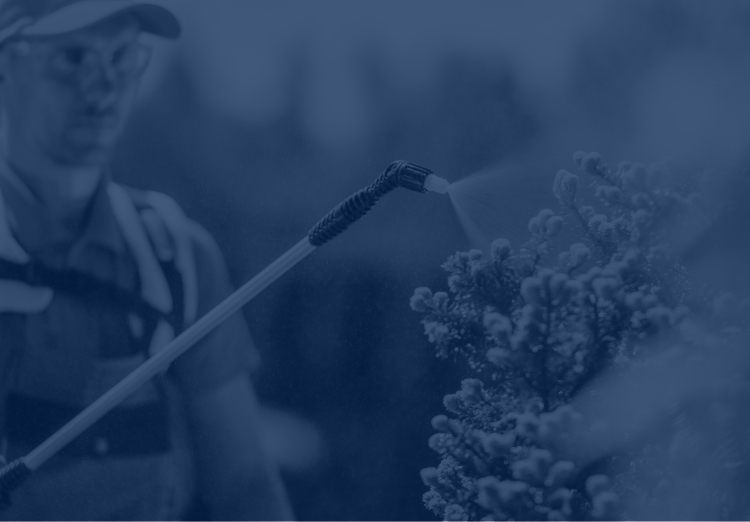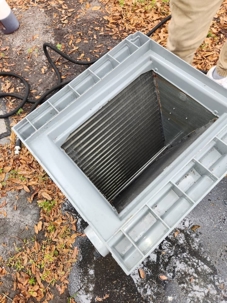Air ducts are the lungs of our homes, circulating air throughout our living spaces to ensure comfort and regulate internal temperatures. Yet, hidden away from our eyes, these ducts can accumulate dust, allergens, and other pollutants that can severely impact indoor air quality (IAQ). In this article, we will explore the importance of Magic air duct cleaning, the process involved, and why you should consider professional services like Momentum AC & Electric to maintain the health of your home environment.
Overview of Air Duct Cleaning
Air duct cleaning is the process of removing contaminants from the ducts of your heating and cooling system. These contaminants include dust, pollen, pet dander, mold spores, and bacteria. Regular cleaning ensures that your HVAC system circulates the cleanest air possible, promoting a healthier indoor environment.
Importance of Clean Air Ducts for Indoor Air Quality
The significance of clean air ducts cannot be overstated. According to the Environmental Protection Agency (EPA), indoor air can be several times more polluted than outdoor air. Contaminants that accumulate in your ducts can be released into your living space, leading to various health issues, including respiratory problems, allergies, and other health complications.
Common Misconceptions About Air Duct Cleaning
There are many misconceptions regarding air duct cleaning. Some people believe that cleaning is unnecessary if the ducts are not visibly dirty or if they have a new HVAC system. However, even new systems can accumulate dust and debris, making regular cleaning essential.
What Is Air Duct Cleaning?
Definition and Purpose
Air duct cleaning entails a thorough cleaning of the HVAC system’s ductwork. The primary purpose is to remove dust, debris, and allergens that can affect indoor air quality. This process significantly contributes to the overall healthiness of the living environment and enhances the efficiency of your HVAC system.
Explanation of the Air Duct Cleaning Process
The cleaning process typically involves several key steps:
- Initial Inspection: Technicians assess the state of your ductwork with specialized tools.
- Cleaning: Using high-powered vacuums and brushes, technicians clean out all contaminants.
- Post-Cleaning Inspection: After cleaning, ducts are re-inspected to ensure thoroughness.
Benefits of Regular Air Duct Cleaning
Regular air duct cleaning offers numerous benefits, including:
- Reduces Allergens: A clean duct system can substantially lower airborne allergens.
- Improves Airflow: Cleaning enhances airflow within the system, resulting in improved HVAC performance.
- Increases Lifespan of HVAC: Routine cleaning reduces strain on the system, prolonging its lifespan.
Why Air Duct Cleaning Matters
Health Benefits
- Reducing Allergens and Irritants in the Air: Dust, mold, and pet dander can become airborne, aggravating allergies and asthma. Regular cleaning significantly mitigates these irritants.
- Improving Respiratory Health: Cleaner air means better breathing. Eliminating contaminants can lead to fewer respiratory issues and enhance overall health.
Energy Efficiency
The efficiency of your HVAC system is heavily dependent on clean air ducts. Clean ducts allow systems to function optimally, leading to:
- Cost Savings on Energy Bills: Systems operating without obstructions will use less energy, which can lower your bills.
Prolonging HVAC Lifespan
Regular air duct cleaning is an essential component of HVAC maintenance. It helps to:
- Prevent Breakdowns: Clogged ducts can cause systems to overheat or fail, leading to costly repairs.
- Improve System Efficiency: A clean system doesn’t have to work as hard to deliver air, extending the unit’s life.
Signs You Need Air Duct Cleaning
Visible Dust and Debris
If you can see dust or debris around your vents or ducts, it indicates it’s time for a cleaning. Look for:
- Dust Buildup: Dust accumulating around vents is often a sign of dirty ducts.
- Mold Growth: Mold can form within ductwork if moisture is present, necessitating immediate cleaning.
Unpleasant Odors
Unpleasant smells circulating through your home can be linked to dirty air ducts:
- Musty Smells: This often indicates mold growth within your ducts.
- Burning Odor: This could indicate dust buildup that’s being heated by the HVAC system.
Increased Allergies or Illnesses
If members of your household are experiencing increased respiratory issues, this could be linked to the quality of your air:
- Allergy Flare-Ups: More frequent allergy symptoms can indicate dirty ducts.
- Increased Illness: If everyone gets sick more often, the problem may lie within your HVAC system.
The Air Duct Cleaning Process
Initial Inspection
During an initial inspection, professionals will look for:
- Signs of Dirt and Damage: Technicians will assess the system’s state to understand the level of cleaning required.
- Potential Sources of Contamination: Identifying sources of moisture that can cause mold growth.
Cleaning Techniques
Standard cleaning methods employed include:
- Brush Cleaning: Rigid brushes dislodge dirt and debris within the ducts.
- Vacuuming: High-powered vacuums remove debris and prevent contaminants from being released back into the living area.
Post-Cleaning Inspection
After the cleaning process, another inspection is crucial to ensure all the contaminants have been adequately removed:
- Verification of Cleanliness: Technicians will check that ducts are clean and free of obstructions.
The Importance of Hiring Professionals
Expertise and Equipment
While DIY cleaning methods exist, hiring professionals like Momentum AC & Electric offers several advantages:
- Specialized Equipment: Professionals use industrial-grade vacuums and cleaning tools capable of deepening into ductwork.
- Technical Knowledge: Trained technicians understand the proper cleaning methods for different HVAC systems.
DIY vs. Professional Cleaning
While some might consider DIY methods, the risks include:
- Incomplete Cleaning: Without proper tools and knowledge, DIY methods often fail to thoroughly clean ducts.
- Potential Damage: Incorrect techniques can damage ducts or worsen air quality.
Questions to Ask Before Hiring
When looking for a professional service, consider asking these questions:
- What methods do you use for cleaning?: It’s essential to know if they use safe and effective techniques.
- Are you certified and insured? Verification of licenses and insurance protects you against any potential damage.
Frequently Asked Questions (FAQs)
How often should I have my air ducts cleaned?
Most experts recommend every 3 to 5 years, but households with pets or allergies may need more frequent cleanings.
Is air duct cleaning worth the cost?
Yes, especially considering the potential health benefits and energy savings.
What can I expect during the cleaning process?
Expect a thorough cleaning involving multiple steps, including inspection, cleaning, and post-cleaning assessment.
Can I clean my air ducts myself?
While DIY cleaning is possible, professional cleaning ensures a more thorough job using specialized equipment.
What equipment is used in professional air duct cleaning?
Professionals typically use vacuums with HEPA filters, brushes, and other specialized cleaning tools for duct systems.
Are there any health risks associated with dirty air ducts?
Yes, dirty ducts can harbor mold, bacteria, and allergens, contributing to various health problems.
How do I find a reputable air duct cleaning service?
Look for certified companies with positive customer reviews and ask for references.
What should I do after my ducts are cleaned?
Change your HVAC filters regularly and maintain good indoor air quality practices.
Will cleaning my air ducts reduce my energy bills?
Yes, cleaner ducts allow your HVAC system to operate more efficiently, often resulting in lower energy costs.
Can air duct cleaning help with mold issues?
Professional cleaning removes mold and spores from ducts, leading to a healthier environment.
DIY Maintenance Tips
Maintaining clean air ducts doesn’t solely rely on professional services. Here are some DIY tips:
Regularly Change Air Filters
Changing air filters regularly is crucial for maintaining air quality and efficiency:
- Frequency: Change filters every 1-3 months, depending on use and if you have pets.
- Why It Matters: Dirty filters decrease airflow and compel the HVAC system to work harder.
Seal Ducts Properly
Sealing ducts minimizes energy loss:
- Importance: Properly sealed ducts provide better airflow and overall system efficiency.
- Regular Checks: Inspect ducts regularly for any gaps or disconnections.
Reduce Dust in Your Home
Maintaining a dust-free environment helps reduce the burden on ducts:
- Regular Cleaning: Use HEPA filters in your vacuum and clean surfaces regularly.
- Minimize Clutter: Keeping fewer items around reduces places for dust to accumulate.
Understanding Indoor Air Quality
What Affects Indoor Air Quality?
Various factors can impact indoor air quality:
- Pollutants: Common pollutants include dust, pet dander, and volatile organic compounds (VOCs) in household products.
- Humidity Levels: High humidity can promote mold growth, negatively impacting air quality.
Measuring Indoor Air Quality
Tools for measuring IAQ include:
- Air Quality Monitors: Devices that track pollutants and provide real-time data.
- Home Testing Kits: Kits are available to test specific contaminants like mold or radon.
Eco-Friendly Air Duct Cleaning Solutions
When choosing cleaning services, consider eco-friendly options.
Green Cleaning Products
Many companies now use eco-friendly cleaning solutions to protect both your home and the environment:
- Benefits: Less toxic cleaning solutions are safer for households, especially with children and pets.
Sustainable Practices
Look for companies that prioritize sustainability in their cleaning practices:
- How to Choose: Research companies highlighting their commitment to environmental protection in their cleaning processes.
Conclusion
The Long-Term Benefits of Air Duct Cleaning
Call to Action
Don’t wait until you see dust swirling in the air or start suffering from allergies to schedule a professional cleaning with Momentum AC & Electric today. Unlock the secrets to a healthier home environment.

